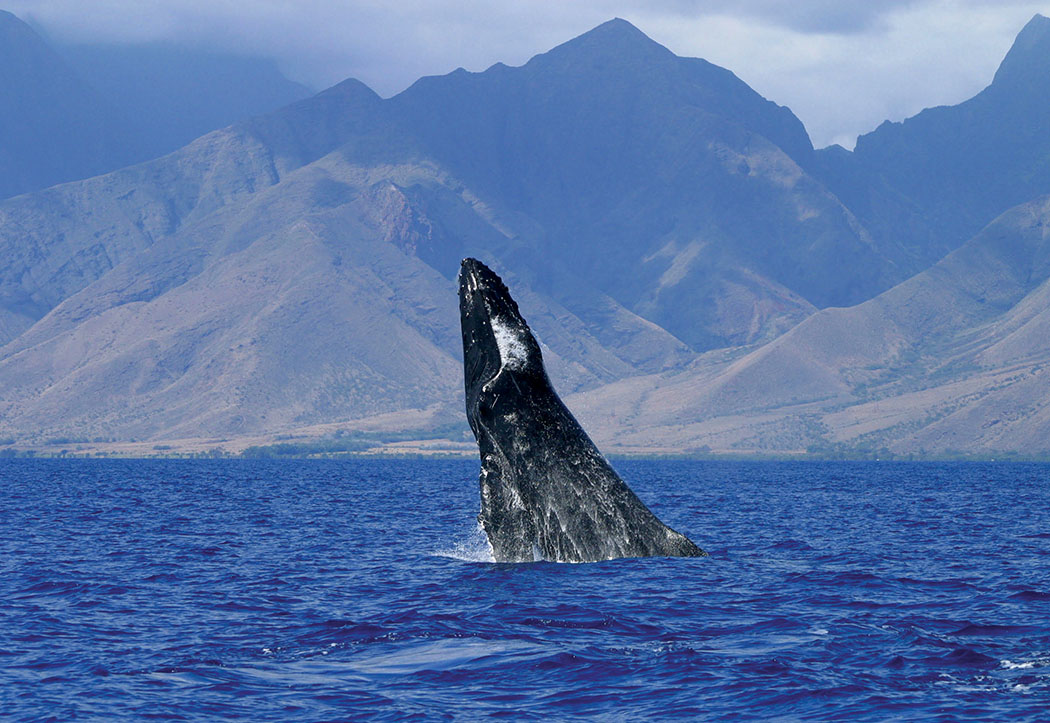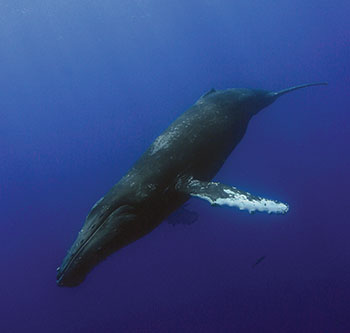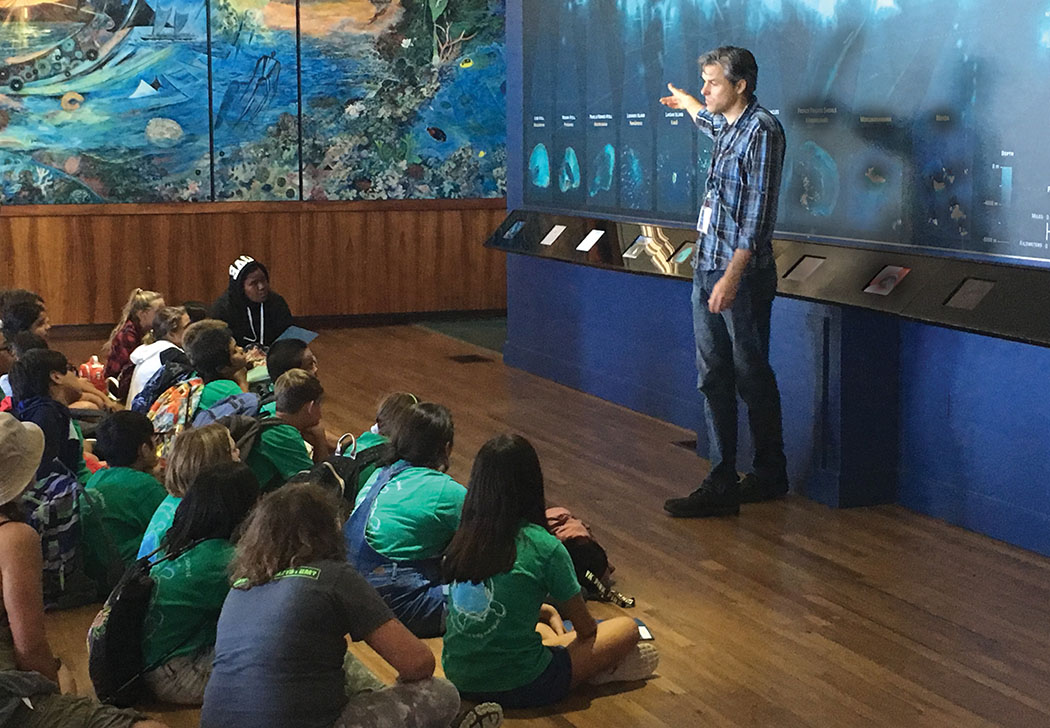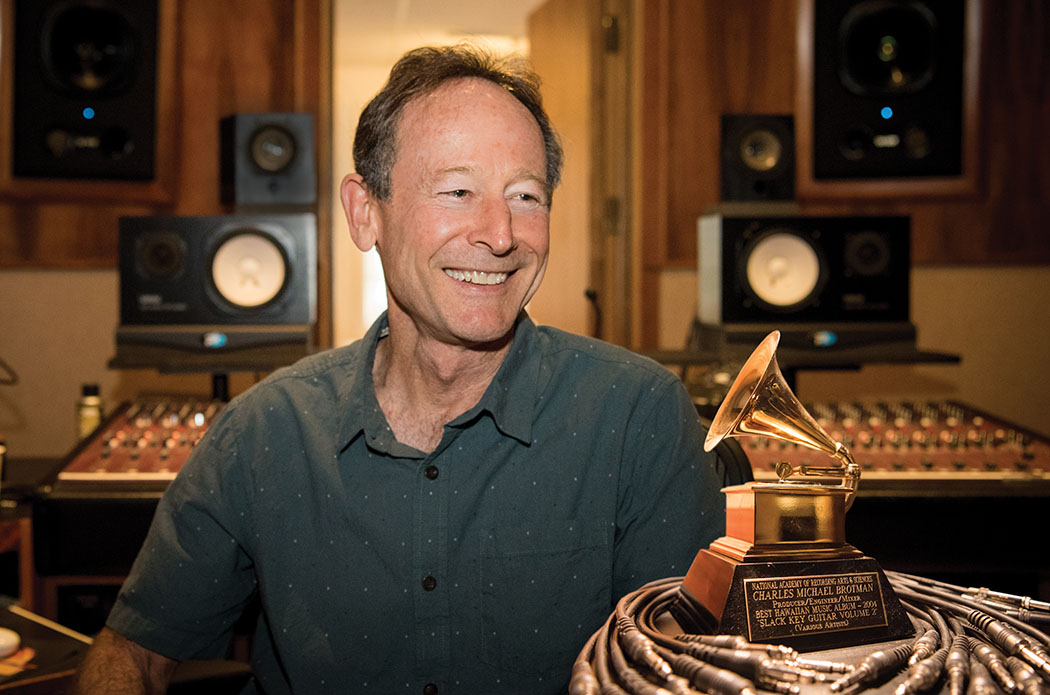
Where are the Whales? Humpback Whale Sightings are on the Decline

By Karen Rose
The Senegalese environmentalist Baba Dioum said that in the end, we will conserve only what we love, we will love only what we understand, and we will understand only what we are taught. Researchers at the National Oceanic and Atmospheric Administration’s Hawaiian Islands Humpback Whale Sanctuary are putting this wisdom to use and focusing their research and outreach on educating the general public about the decline in humpback whale sightings.
Every year from November through May, visitors from around the globe make their way to the Hawaiian Islands to get a glimpse of the magnificent humpback whale. Thousands of humpback whales migrate between Alaska and Hawai‘i during this time to mate and give birth in the warm shallow waters off Hawai‘i.

During the 2015 whale season there was a noticeable shift. Operators of whale watching tour companies around the state began reporting lower than average numbers of whale sightings, as well as whales arriving later in the season. This trend has stayed consistent for the past three years and scientists are keeping a close eye on the whales’ changing migration patterns.
“The last three years in Hawai‘i, we’ve consistently seen fewer whales than we would normally expect to see,” says Dr. Marc Lammers, Research Coordinator at the National Oceanic & Atmospheric Administration’s Hawaiian Islands Humpback Whale Sanctuary.
“The first year we wrote it off as an anomaly, maybe tied to El Niño. After the third year, it caught our attention more and we felt it could be a sustained trend. However, because we don’t know exactly what’s driving the reduction in the whale population, it’s difficult to know how concerned we should be.”
Humpback whales live throughout the world’s oceans and migrate between the poles where they feed, and tropical waters where they breed. Expectant whale mothers migrate to Hawai‘i to give birth. The warm waters protect the calves from predation and allow them to stay warm while they nurse and grow the thick layer of blubber needed to survive the migration back to the cold waters of Alaska.
In 1973, the humpback whale was placed on the Endangered Species List due to a drastic reduction in numbers caused by commercial whaling. This protective status proved successful and in 2006, researchers estimated that 10,000 humpback whales were migrating to Hawai‘i to birth their calves. Between the years 2006 and 2013, the whale population was estimated to be growing at an annual rate of nearly six percent. However, this trend is now in question.
During the 2015 season, researchers realized the fluctuations in whale sightings appeared to be more than an anomaly, and they began delving into what was causing these changes. By 2017, researchers were reporting that sightings in some parts of Hawai‘i were down over 50 percent from the 2014 numbers and the sightings for new calves was down more than 35 percent.

“We don’t know exactly what’s driving these changes in numbers of whales,” says Marc. “We have our suspicions, but ultimately, we have more questions than answers. We’re actively trying to develop a strategy for better understanding what’s happening and what might be driving the changes we’re observing.”
Marc explains that it is still unclear whether there is a decrease in the overall number of whales, or if the decrease is related to a redistribution of whales to different areas. Whales are migratory animals, so there’s a possibility their behavior is changing and fewer animals are migrating to Hawai‘i. Instead, they may be spending more time foraging or using other areas for breeding.
“The reduction in population could be a temporary shift due to the warming waters that have altered the whales’ environment,” he says. “However, this variable is in the process of shifting and changing, so one possible outcome is that as temperatures normalize, the whale population in Hawai‘i will return to its previous numbers. Unfortunately, we have no way of knowing yet if this will happen.”
Despite the uncertainty of what is causing the reduction in whale sightings, most researchers conclude that one likely explanation is a reduction or a shift in available food. Over the last decade, ocean waters have warmed significantly due to a cluster of oceanographic conditions. These warmer than average water temperatures off Alaska affect the available food supply of the humpback whale, specifically their primary food source, krill.
Another possibility is the whale population is reaching its natural carrying capacity. A limited food source supports a population of a certain size and beyond that, lack of sustenance begins to affect the birth rate. If this is indeed one of the factors related to the reduction in sightings, the humpback whales that make their annual trek between Alaska and Hawai‘i may have reached their population limit. With warmer waters and less food, the whales’ natural habitat suffers a loss in carrying capacity, resulting in a decrease in the whale population.

Marc explains that humpback whale populations tend to fluctuate, especially once they’ve reached a certain carrying capacity in the environment. After several decades of sustained growth, the population will plateau and start to fluctuate around an average number. Consequently, some years will see fewer whales than others. This is something he and his fellow researchers take into consideration before assuming there is something wrong with the population.
“We need to stay vigilant and aware of what’s happening so we can understand what’s going with the whale population,” stresses Marc. “If it’s a matter of whales redistributing themselves and migrating to new locations, we can expect to see fewer whales here in Hawai‘i going forward. It could just be a natural shift taking place, perhaps in response to climate-related issues.”
“On the other hand,” he continues, “if it turns out we’re seeing a natural reduction in the whale population and reproductive rates are being affected, then it will become more of a concern, especially if it appears the trend is going to be sustained over time.”
Researchers are currently taking into consideration all of the possible explanations for the reduced sightings. While they agree that food availability appears to be one variable impacting the humpback whale population, researchers are still determining precisely how it is affecting them. In order to comprehensively understand what is causing these changes, scientists continue to monitor the species and keep a close eye on any new developments.
“We’ve continued to see fewer whales come to the island,” says Marc. “The bottom line is that this change in the population could be from natural variability, or something more serious could be happening. It’s too early to determine which explanation is correct, or whether the answer lies somewhere in the middle.”
Despite the concern over their population numbers, humpback whales continue to return to Hawai‘i every year to breed and birth their young. Although the numbers are declining and the season shortening, it doesn’t stop both visitors and locals from enjoying the whales’ majestic displays of grandeur.

While food availability appears to be clearly linked to the decrease in whale sightings, there is always the possibility the whales’ food sources will return to previous levels. Once the waters cool down from the El Niño conditions and the fish populations increase, the whales will hopefully have the calories and nutrition they need to thrive and procreate at previous levels.
In the meantime, Marc stresses the importance of being respectful and mindful of the whales that come to the islands for breeding and mating purposes, particularly mothers and calves.
“There’s concern that as long as whale numbers are reduced, the ones who do migrate to Hawai‘i are going to receive increased attention and experience a greater negative impact from people trying to get close to them,” he says. “For more vulnerable whales, like the younger calves and their mothers, it’s important we all be respectful and mindful that it’s not the right time to put increased pressure on them. This is especially true when calf production is lower than normal.”
Marc and other scientists at the Hawaiian Islands Humpback Whale National Marine Sanctuary are encouraging others to help whale mothers and calves thrive. It’s important to give them space, as too much interaction with humans can put additional stress on the whales, and jeaopardize their health and numbers further. It is vital for humans to respect the needs of these incredible creatures and give them uninterrupted time to rest and nurse their young.
“It’s a matter of maintaining awareness and proper ocean etiquette,” says Marc. “We just want to remind people to be mindful of the current rules and regulations, and give the whales their space. The more science understands how the whales are being affected, the better we will be at protecting them and helping them thrive.” ❖
Photos courtesy of NOAA’s Marine Mammal Health and Stranding Response Program
For more information: hawaiihumpbackwhale.noaa.gov
Mahalo Jack’s Diving Locker – Ocean Story Sponsor


